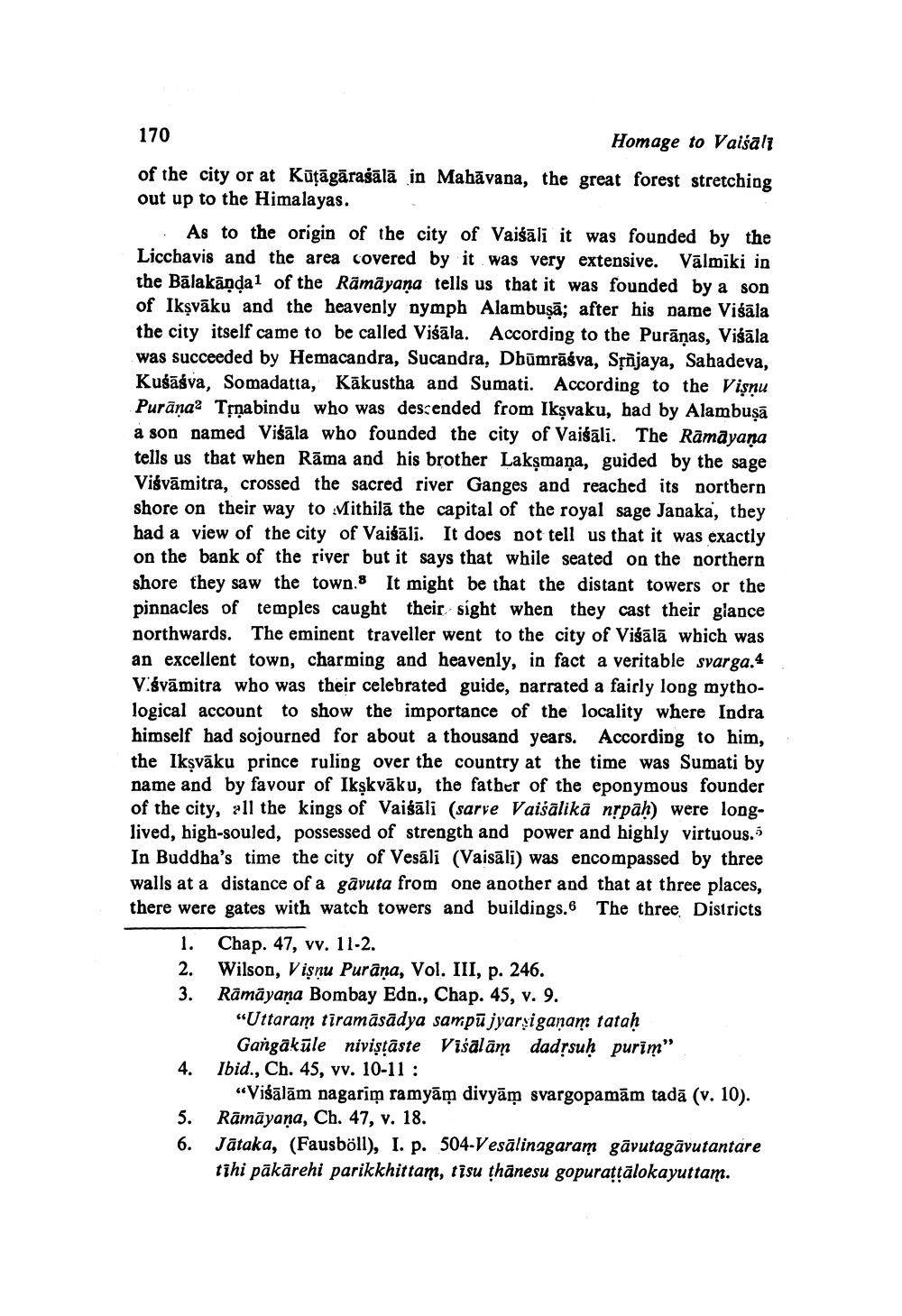________________ 170 Homage to Vaisali of the city or at Kutagarasala in Mahavana, the great forest stretching out up to the Himalayas. As to the origin of the city of Vaisali it was founded by the Licchavis and the area covered by it was very extensive. Valmiki in the Balakandal of the Ramayana tells us that it was founded by a son of Iksvaku and the heavenly nymph Alambusa; after his name Visala the city itself came to be called Visala. According to the Puranas, Visala was succeeded by Hemacandra, Sucandra, Dhumrasva, Spojaya, Sahadeva, Kusasva, Somadatta, Kakustha and Sumati. According to the Visnu PuranaTrnabindu who was descended from Iksvaku, had by Alambusa a son named Visala who founded the city of Vaisali. The Ramayana tells us that when Rama and his brother Laksmana, guided by the sage Vissvamitra, crossed the sacred river Ganges and reached its northern shore on their way to Mithila the capital of the royal sage Janaka, they had a view of the city of Vaisali. It does not tell us that it was exactly on the bank of the river but it says that while seated on the northern shore they saw the town. It might be that the distant towers or the pinnacles of temples caught their sight when they cast their glance northwards. The eminent traveller went to the city of Visala which was an excellent town, charming and heavenly, in fact a veritable svarga.4 Vyvamitra who was their celebrated guide, narrated a fairly long mythological account to show the importance of the locality where Indra himself had sojourned for about a thousand years. According to him, the Iksvaku prince ruling over the country at the time was Sumati by name and by favour of Ikskvaku, the father of the eponymous founder of the city, all the kings of Vaisali (sarve Vaisalika nTpah) were longlived, high-souled, possessed of strength and power and highly virtuous. In Buddha's time the city of Vesali (Vaisali) was encompassed by three walls at a distance of a gavuta from one another and that at three places, there were gates with watch towers and buildings. The three Districts 1. Chap. 47, vv. 11-2. 2. Wilson, Visnu Purana, Vol. III, p. 246. 3. Ramayana Bombay Edn., Chap. 45, v. 9. "Uttaram tiramasadya sampu jyarsiganam tatah Gangakule nivistaste Visalam dadssuh purim" 4. Ibid., Ch. 45, vv. 10-11 : "Visalam nagarim ramyam divyam svargopamam tada (v. 10). 5. Ramayana, Ch. 47, v. 18. 6. Jataka, (Fausboll), I. p. 504-Vesalinagaram gavutagavutantare tihi pakarehi parikkhittam, tisu thanesu gopurattalokayuttam.




